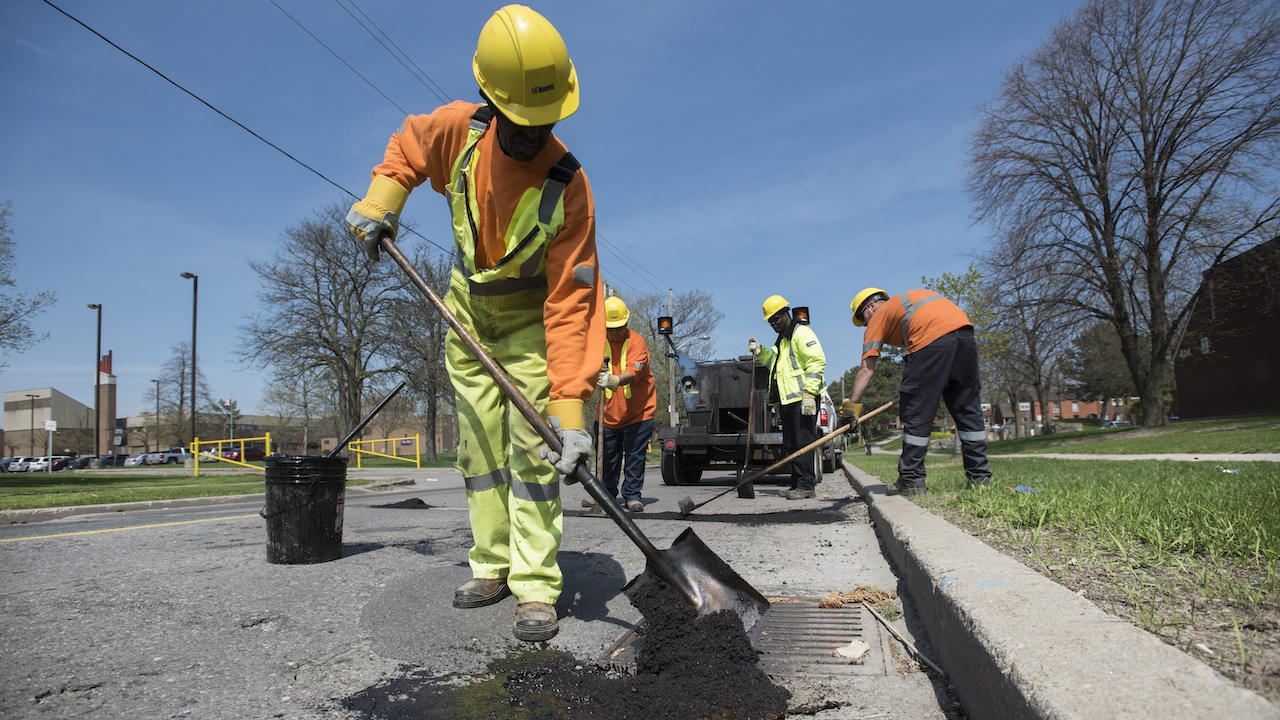Infra
Toronto’s infrastructure is crumbling — and it’s not even saving us any money | TVO Today

Only 48 per cent of Toronto’s road network is rated as in “fair” condition or better. (Globe and Mail/CP)
My colleague Matt Gurney summarized the bleak state of Canadian infrastructure at the municipal, provincial, and federal levels in his Thursday column. At the risk of some repetition, there are a few other points that are worth highlighting for anyone who thinks that the situation can’t be all that bad. If anything, the situation is worse than a lot of people think — in part because the decay has been gradual enough that, in some cases, we’ve simply shrugged off the costs of dealing with failing infrastructure.
Returning to Toronto’s long-term asset-management plan — the report that provides the $26 billion number for the city’s infrastructure deficit — it’s instructive to see where the costs are, because not all infrastructure is failing at the same rate or imposing the same costs on the public. In Toronto, the biggest source by far of the infrastructure gap is its road network: both because of the scale (the city notes that, at 5,600 kilometres, its street network is roughly the distance from Toronto to… Whitehorse) and its age.
Only 48 per cent of the city’s road network is rated as in “fair” condition or better. And, at current spending levels, that number is projected to fall to 38 per cent in a decade. Given that this is a city that’s been governed by and for motorists for so many years, it’s bleakly amusing that council’s car-worshipping members couldn’t even fund their single biggest priority sufficiently to maintain it; it’s also notable that the city’s roads are in almost uniquely bad shape, relative to other divisions.
You’ve heard about the city’s poor community-housing standards? Well, 58 per cent of the assets are fair or better. Shelter services? They’re at 65 per cent. Parks and recreation? At 67 per cent. One of the only departments that’s worse off than the city’s roads is dock walls and breakwaters (Toronto is on a lake, you may have noticed), at 16 per cent — but it’s so much smaller than the road network that the gap between current funding and what would be needed to maintain the state of good repair is a paltry $833,000. The similar gap for the city’s road network is just shy of $11 million. All of this, however, is peanuts compared to the funding gap for transit: a staggering $2.3 billion, or more than half the city’s total infrastructure gap. I said my piece about the rotting corpse of Toronto’s transit system more than a year ago now.
And because these things are rarely obvious, all these numbers simply reflect what it would cost to bring Toronto’s infrastructure up to snuff to meet the current expected levels of service. They don’t anticipate the city’s high levels of population growth, nor do they reflect the challenges of hardening the city’s infrastructure against the likely impacts of climate change, most obviously increased flooding. Barring some dramatic change in fortunes, we know the city’s population will continue to increase and the climate will continue to change, so these facts are just further empty spaces in our accounting that we don’t have answers to.
In short, the largest city in Canada has let its infrastructure rot, and we find ourselves in a very deep hole — and with limited options to start digging ourselves out. You can blame nearly 15 years of low-tax conservative governance by first Rob Ford and then John Tory; you can blame the structural financial impediments to good governance imposed by the province. I’m focusing on the road and transit network here because whether you drive, walk, bike, or take transit, simply existing in this city means you need the roads and transit system to work, in a very basic way. When they don’t, the costs aren’t absorbed by the city — they’re pushed onto residents.
When the subway fails, yet again, during the morning or afternoon rush hour, passengers incur real costs — they hop into a cab or rideshare instead, or they simply take a huge productivity hit that day as they wait for a shuttle bus they can actually board. The road network has more redundancy to it simply because it’s everywhere, but growing numbers of deep, unfilled potholes impose costs on motorists, cyclists, and other road users — and not only when the city argues that its terrible roads are too dangerous to allow e-scooters to operate safely.
Instead of saving residents money, the city is offloading costs from its balance sheet onto residents themselves, and the burdens don’t end with the city’s threadbare transportation networks. An obvious problem for politicians, however, is that if the city were to suddenly fund the TTC sufficiently to keep it running regularly, that would be both (a) expensive, and (b) literally no more than what residents have every right to expect. That is to say, it would cost more, but nobody would see it as a gift, and they might not even register it as a real improvement in their lives. Hardly a political winner.
One answer here is for other levels of government to step in with their deeper pockets — pockets filled, in large measure, by the economic growth that Toronto generates. It’s disappointing that, this week, the feds seem to be backing away from a major commitment, but it remains true that this is properly a provincial matter. The New Deal announced last year was a good start, but insufficient. For all the talk of economies and efficiencies, the reality is that, whatever Toronto taxpayers “saved” in the last decade-plus, those costs didn’t disappear — they were simply pushed around by elected officials acting much like petulant children with a plate of peas. In either case, that trick lasts only so long before people notice.


)






